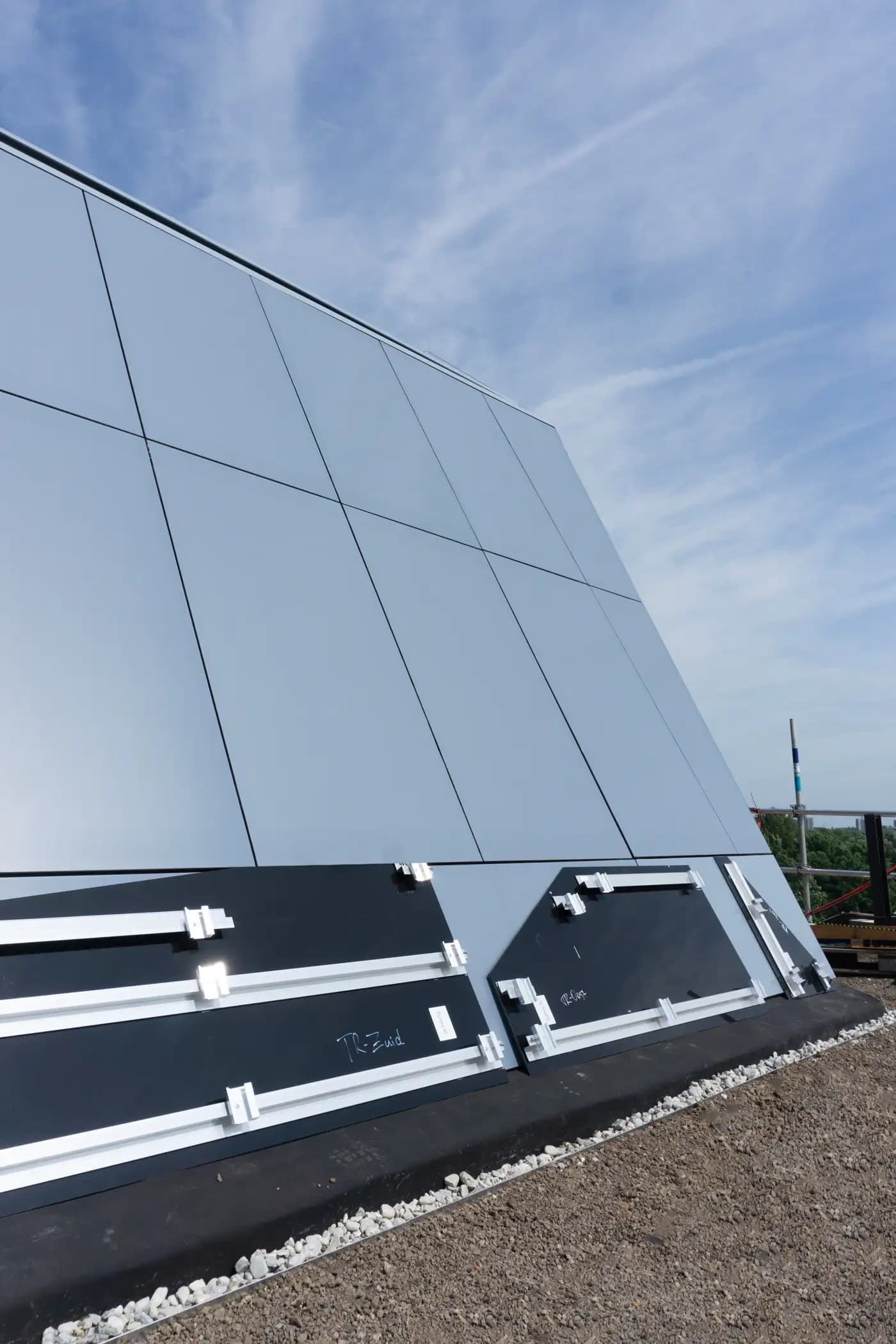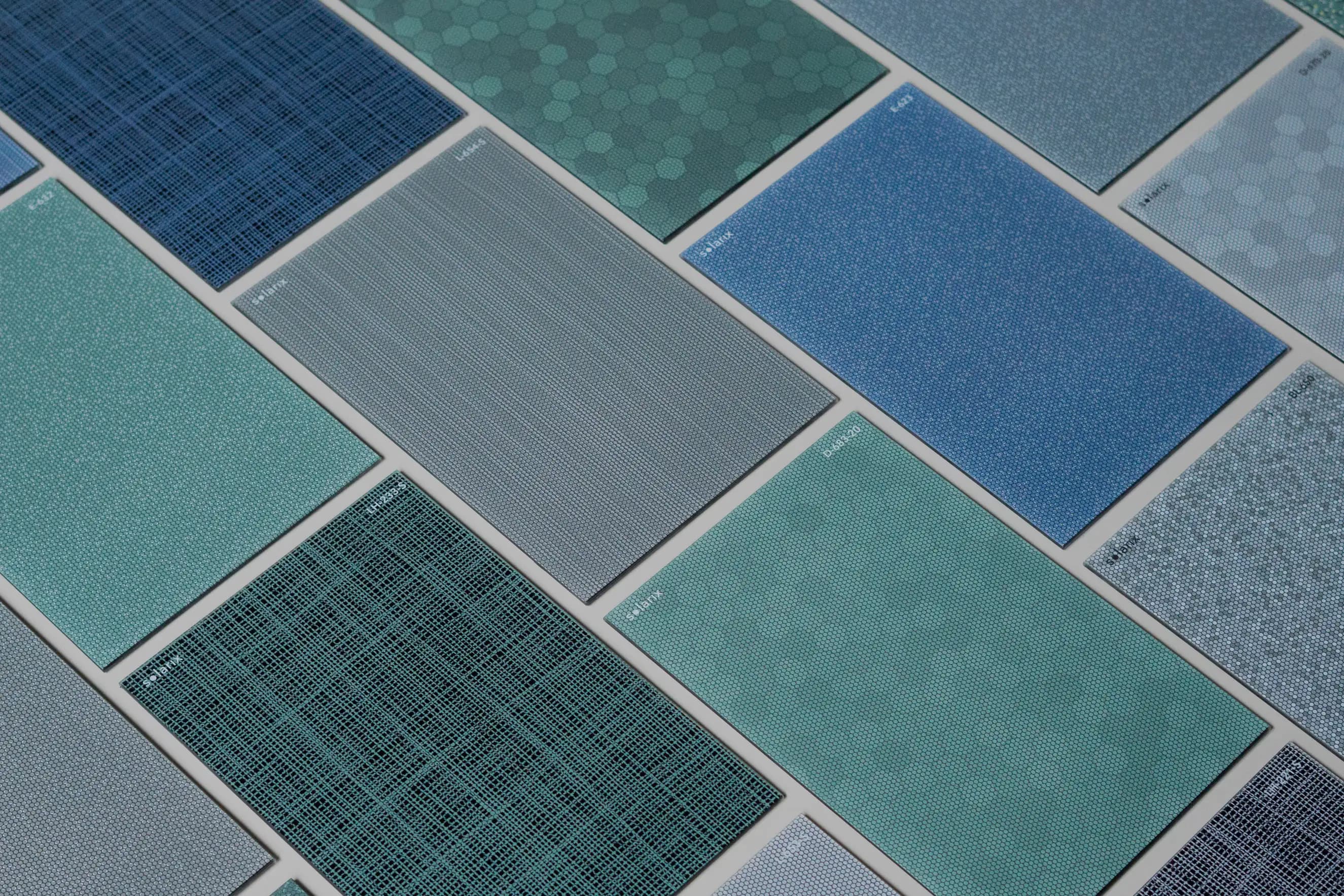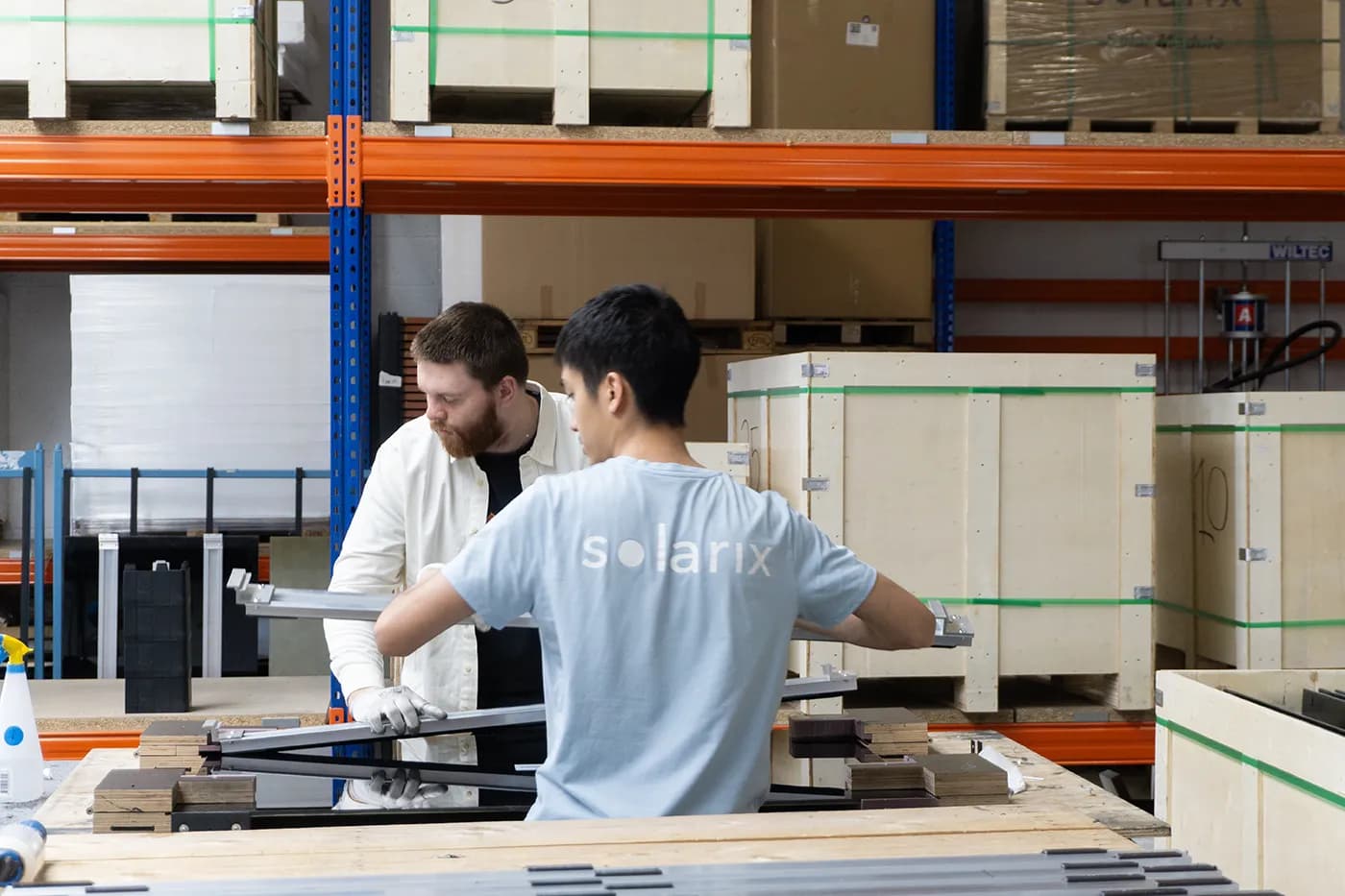Solar Facades and Battery Storage as a Solution to Grid Congestion
Once again, grid congestion is putting significant pressure on many construction projects. As a result, energy solutions are being accelerated. Battery storage and solar façades are two separate answers to this issue – but when combined, they can offer optimal results. Together, they provide a temporary solution until the grid is upgraded, and long-term energy security thereafter. But how exactly? The building envelope – alongside the roof – plays a key role in this. And façades offer unique advantages in the context of grid congestion.
Solarix and SolarNRG explain how. In this article, we share our experience, give practical tips, and explain why solar façades combined with battery storage form an important solution – now and in the future – in the fight against grid congestion.


Why a solar facade helps tackle grid congestion: 4 key reasons
1. Balanced energy generation, even in winter
Facade panels are typically installed on south or southwest-facing walls, where they can generate extra yield — particularly in winter. Because the sun sits lower in the sky during the colder months, facades can produce significant energy at exactly the right time. While roof panels tend to peak in summer, facade panels deliver usable energy in the colder seasons, when demand is often higher. The result: a more balanced generation profile throughout the year.
2. Reduced peaks, better daily distribution
A solar facade also helps distribute energy generation more evenly throughout the day. Roof panels operate best around midday, when the sun is highest. Facade panels, however, start generating earlier in the morning and continue later into the afternoon and early evening. These are the very times when energy consumption tends to spike — think of businesses powering up equipment or households cooking and charging devices. This better alignment with actual demand helps reduce feed-in at peak times, easing pressure on the grid.
3. A complementary energy system
One of the major challenges for solar owners is feeding surplus energy back into the grid — especially on sunny days when the grid is overloaded. Facade panels can help ease this pressure. Their complementary generation profile stabilises energy production throughout the day and across the seasons, reducing reliance on the grid and minimising the risk of grid stress.
4. Towards energy independence
The rise of home and commercial battery systems, combined with smart energy management, makes it increasingly easy to use, buffer, or store self-generated electricity. When paired with facade solar panels, this creates a resilient system that is less dependent on external energy sources and the overloaded grid. This makes it far less vulnerable to grid congestion. This energy can also be shared locally. Especially where consumption profiles are complementary — such as between neighbouring businesses — the solar facade contributes to a more independent, off-grid energy system.
The outcome?
Lower energy costs, reduced feed-in charges, more consistent access to sustainable power, and greater long-term value for your property.
Our experience with grid congestion — 3 practical tips
Rooftop solar is now a common sight across the Netherlands. A new, innovative and aesthetic solution gaining traction is using the building facade for solar energy. When doing this, it’s important to address aspects like heat dissipation and maintenance. Facades tend to heat up faster than roofs due to limited natural ventilation. That’s why we always ensure there’s adequate space behind the panels to allow heat to escape, which keeps the system efficient and extends its lifespan. Just like rooftop PV systems, facade panels can be connected in series or parallel. The most suitable approach depends on factors like panel orientation, shading and visual design. We always tailor our advice to your project. We also select the right inverter — preferably one with a low start-up voltage, as facades receive less direct sunlight in winter but still need to function optimally. While solar panels require minimal maintenance, facades can be harder to access, making a good monitoring system essential. Online monitoring ensures any issues are spotted early and resolved quickly.
The energy transition demands smart solutions — particularly for larger buildings such as commercial sites, apartment blocks or institutions. One such solution is battery storage: a system that stores excess solar energy for later use. But when is it worthwhile? And what should building owners or managers consider? It depends on several factors. First, we look at consumption patterns. If the building uses a lot of energy in the evening after the panels stop generating, a battery is a good fit. It stores surplus energy generated during the day for evening use. Installation is another consideration: batteries require adequate space and must be installed safely and in accordance with fire regulations. They also need to integrate smoothly into the existing electrical system. Finally, battery systems must be financially viable. Batteries still involve a significant investment, and whether this pays off depends on energy prices, grid fees, available subsidies and tax incentives.
Solar panels are no longer purely functional — when used in the facade, they become part of the architectural identity. For a successful and aesthetically strong result, early integration into the design process is key. Our experience shows: the sooner we’re involved, the better the outcome — both technically and visually. Solar facades offer huge design potential. Think of colours, patterns and even textures. When we’re involved early, Solarix can help strike the right balance between performance and appearance, after which SolarNRG handles the technical engineering. This includes fixing systems, cable routing, inverter selection and access. These technical elements impact the facade design and are easier to integrate when included from the start.
Looking ahead
The urgency surrounding grid congestion — or grid stress — is increasing by the day. Dutch grid operator Alliander recently warned that over a third of new-build projects in North Holland face delays due to an overloaded electricity grid [NOS, 2024]. Similar bottlenecks are emerging across the Netherlands — and Europe.
Battery storage and peak shaving are vital steps forward, but they’re not the only answer. Solutions like the solar facade are no longer a ‘nice to have’ — they’re a critical component in the energy transition. They offer a smart, aesthetic and effective way to generate sustainable energy where rooftops fall short or where grid reinforcement is delayed. And by spreading production better across the day and year, they ease grid pressure and lower energy costs — all without compromising on design.
Curious about what a solar facade or battery storage system could mean for your project? Get in touch with us today.
• 09 July 2025



